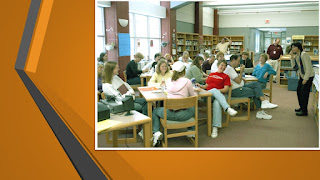Workshop

Workshop Q. A college wants to give training in use of Statistical Package for Social Sciences (SPSS) to researchers. For this the college should organise: (A) Conference (B) Seminar (C) Workshop (D) Lecture प्रश्न . एक महाविद्यालय अपने शोधार्थियों को सामाजिक विज्ञानों के लिए सांख्यकीय पैकेज की प्रयोग-विधि में प्रशिक्षित करना चाहता है। इसके लिए उसे आयोजित करना चाहिए: (A) सम्मेलन (B) संगोष्ठी (C) कार्यशाला (D) लेक्चर To provide effective training in the use of Statistical Package for the Social Sciences (SPSS) to researchers, a workshop would be the most suitable format. Let me explain why: 1. Conference (Option A) : o Conferences are typically large-scale events where experts present their research findings, discuss trends, and exchange ideas. o While conferences are valuable for networking and exposure to the latest research, they are not designed for hands-on training or skill de...





